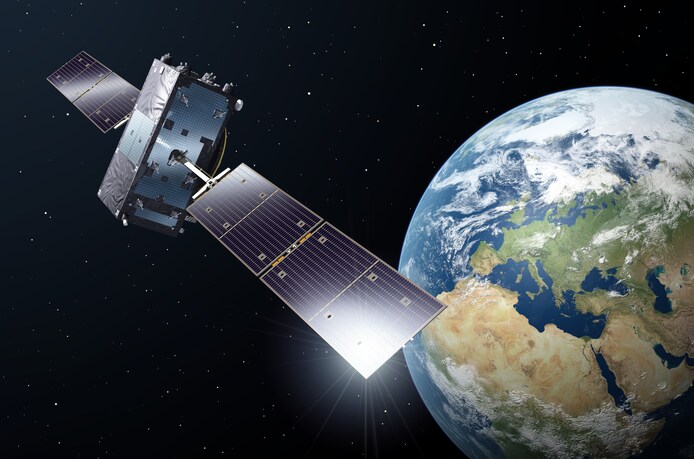
Back to selection
GEO Satellite
STENTOR GEO
Failure
Launch date
11 December 2002
Country

Purpose
Communication
Intended position
0° West
Manufacturer
Operator
France Telecom
Launch operator
Launch vehicle
Ariane 5ECA
Expected lifetime
12 Years

STENTOR Satellite at 0° West – France Telecom & CNES Technology Demonstrator
STENTOR (short for Satellite de Télécommunications pour Expérimenter les Nouvelles Technologies en Orbite) was a French experimental communications satellite developed to test and validate next-generation telecom technologies in orbit. The project was a joint initiative between France Telecom, CNES (Centre National d’Études Spatiales), and the French Ministry of Defense (DGA).
The STENTOR satellite was designed to demonstrate advanced broadband and multimedia communication services via satellite, including high-speed data and video transmissions to small, user-friendly terminals. It was set to serve both France and wider Europe from its planned orbital position at 0° West.
Technical Specifications and Mission Objectives
STENTOR was built on the Spacebus-3000B3 platform, with manufacturing led by Alcatel Space (spacecraft bus) and Astrium (avionics). The satellite weighed 2,210 kg (4,870 lb) and was designed for a 9-year operational life.
It carried:
-
6 Ku-band transponders for digital TV, internet, and data services
-
1 Extremely High Frequency (EHF) transponder for secure government communications
The satellite aimed to validate in-orbit technologies that would be used in the development of future generations of French and European telecommunications satellites.
Launch Failure – Ariane 5ECA Maiden Flight
STENTOR was scheduled for launch on December 11, 2002, aboard the maiden flight of the Ariane 5ECA, a powerful new version of the Ariane 5 rocket, designed by Arianespace to deliver larger payloads to Geostationary Transfer Orbit (GTO). The launch took place at 22:22 UTC from ELA-3 at the Guiana Space Centre in Kourou, French Guiana.
Unfortunately, just three minutes into the flight, the mission failed due to a malfunction in the Vulcain 2 main engine. A cooling system issue, identified around 96 seconds after liftoff, caused the engine to overheat and ultimately destroy itself. The rocket began to tumble, and the range safety officer terminated the flight at 456 seconds post-liftoff.
As a result of the failure, the STENTOR satellite was lost, and the incident caused significant delays to subsequent missions. Most notably, the European Space Agency’s Rosetta mission, originally scheduled to launch in January 2003, missed its launch window and was later retargeted to Comet 67P/Churyumov–Gerasimenko, finally launching in 2004.
Historical Context – France Telecom and CNES
France Telecom, now operating under Orange S.A., is a global telecommunications company and was a major stakeholder in early satellite communication developments in France. Partnering with CNES and the DGA for STENTOR demonstrated its commitment to advancing satellite-based broadband and multimedia services for both commercial and strategic purposes.
CNES, the French space agency, has played a vital role in Europe’s space research and satellite innovation. Through STENTOR, CNES aimed to pave the way for a new era of secure, high-performance communications technology for both civilian and defense applications.
GEO Satellite
STENTOR
Failure
GEO Satellite
STENTOR
Failure
GEO Satellite
STENTOR
Failure